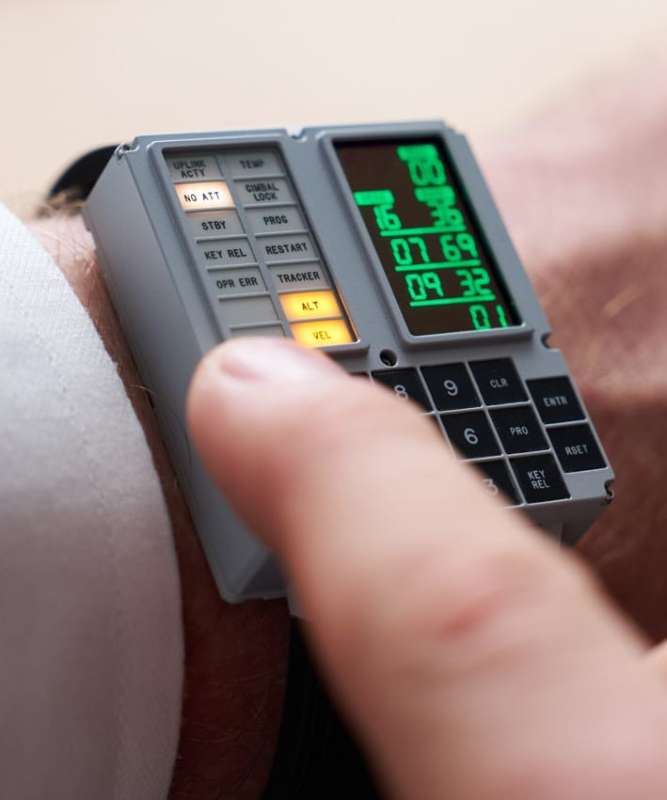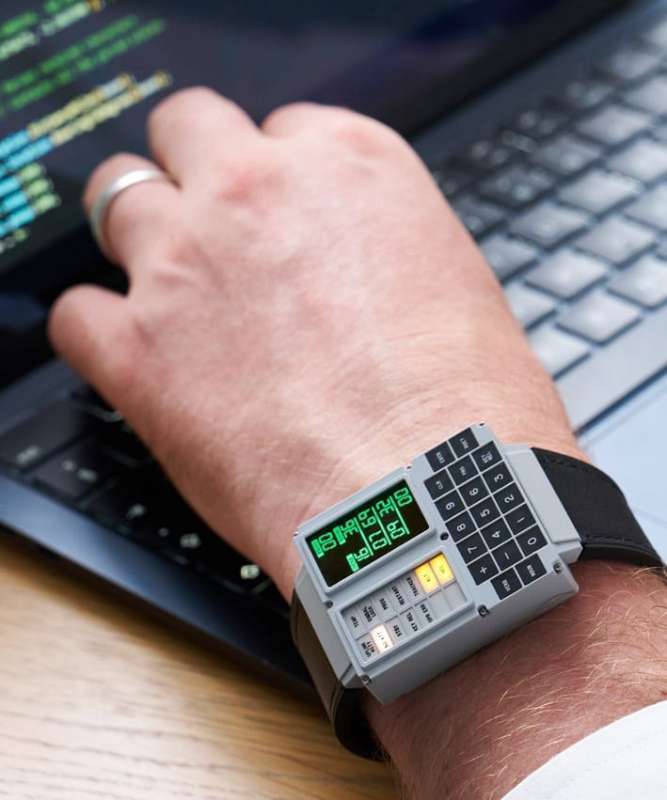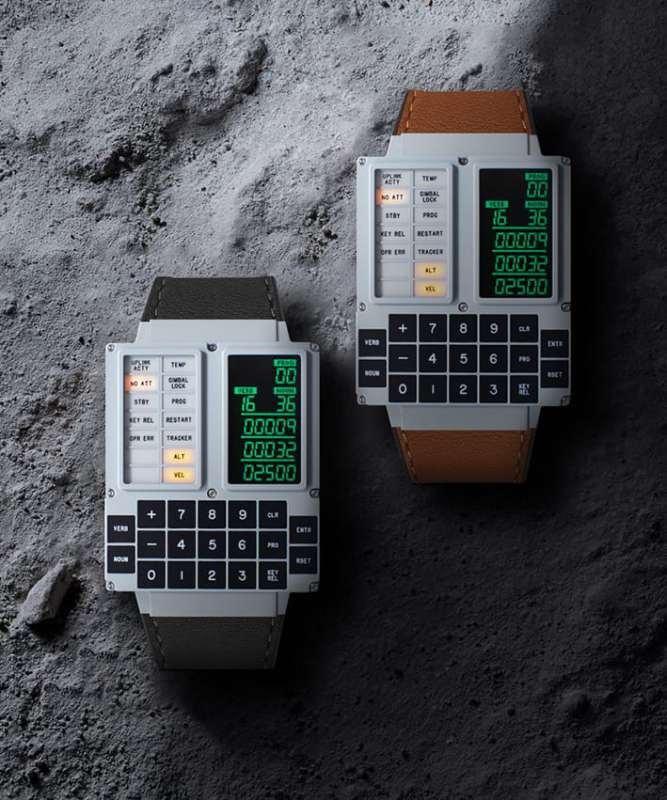
NEWS – The DSKY Moonwatch by Apollo Instruments is a tribute to the Apollo space program’s iconic DSKY interface (Display and Keyboard). Inspired by the computer that guided astronauts to the moon, this watch combines historical design with modern functionality. Its seven-segment OLED display and authentic verb-noun sequences make it feel like a piece of NASA history on your wrist.
But this isn’t just a collector’s item—it’s a fully functional wearable computer with features like GPS navigation, alarms, timers, and programmable features. Built with durable stainless steel, scratch-resistant glass, and premium leather straps, it’s designed to last while looking cool and extremely nerdy.
Production for the DSKY Moonwatch starts in early 2025, but you can reserve this one-of-a-kind timepiece now for £240 ($300) at apollo-instruments.com. The final price will be £659 ($825).
What is/was the DSKY?
The Apollo DSKY (Display and Keyboard) was the primary interface for astronauts to communicate with the Apollo Guidance Computer (AGC) during the Apollo space missions. Pronounced “dis-key,” this groundbreaking device allowed astronauts to input commands and receive real-time data using a simple numeric keypad and a “verb-noun” command system. For example, a verb might specify an action (like “display”), while a noun identified the data involved (like “velocity”).
Each Apollo Command Module had two DSKYs, and the Lunar Module had one (it was not wearable). The interface featured a 21-digit display, indicator lights, and 19 tactile keys, making it an essential tool for navigating and controlling spacecraft. It played a critical role in tasks like aligning guidance systems, monitoring spacecraft velocity, and executing precise lunar landings.
Developed by MIT’s Instrumentation Laboratory and manufactured by Raytheon, the DSKY was a marvel of its time. Its influence extended beyond space exploration, shaping modern computer interfaces with its innovative design. The DSKY remains an iconic symbol of human ingenuity and the Apollo program’s success in reaching the Moon.



